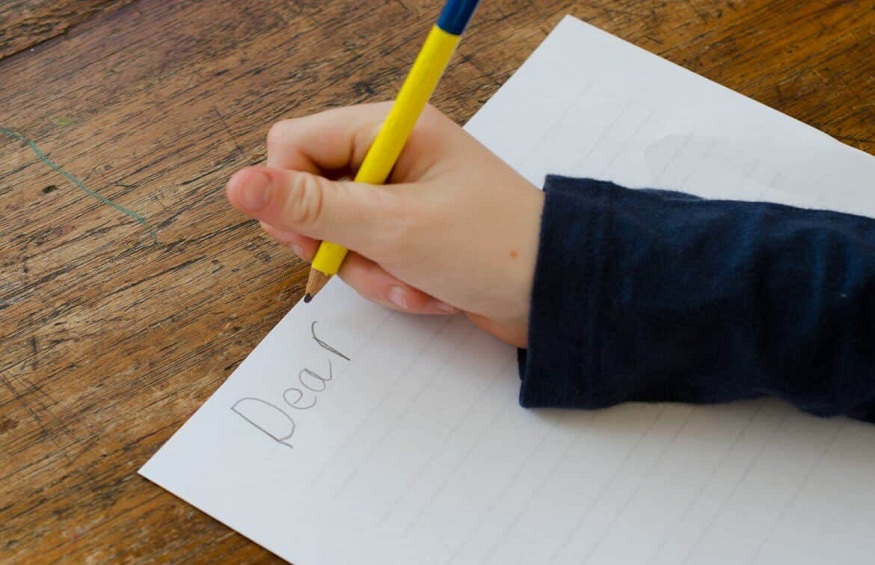In the digital age, our written communication essentially passes through the keyboard of our computer, our tablet or our smartphone. Applications and assistance by voice command are multiplying. Google and other search engines increasingly offer images and videos to the detriment of written content. Therefore, is it still useful for our children to learn to write by hand? What reasons should lead adults to use handwriting? Writing-dysgraphia answers you.
Why learn to write by hand?
Since 2016, Finland has abandoned the teaching of cursive writing in favor of script and computer writing. In the United States, the majority of states opted for the keyboard a few years ago. But a reversal was made in 2014 after the first warnings from neuroscientists.
The need to learn handwriting
According to Denis Alamargot, professor of cognitive psychology at the University of Paris-Est Créteil, learning to handwrite leads to better memorization (1). This is facilitated by the graphomotor gesture (gesture associated with the shape and layout of each letter).
Why write by hand?
Among the many benefits, here are 5 good reasons to keep handwriting in our lives:
1. Activation and maintenance of our brain capacities:
As we have seen, writing by hand solicits different areas of the brain. Regularly calling on our brain capacities contributes to our mental health. Like crosswords or reading, handwriting ensures the proper functioning and durability of our intellectual abilities.
2. Well-being:
When we write by hand, our gaze follows the letters and the words that follow one another. Our hand holds the pencil or pen and moves over the paper, the texture of which we feel. This process provides a feeling of well-being.
Our text takes shape before our eyes and brings us the satisfaction of creating something personal and unique like a painter or a sculptor. It increases our self-confidence and makes us happier.
3. The relaxing effect:
Like meditation, breathing techniques or yoga, handwriting promotes relaxation. Paying attention to his thoughts and concerns does us good. Listening to your inner self and being able to express yourself without the judgment of others is beneficial to us.
4. Liberation of the mind:
To put a problem on paper is to begin to solve it. Putting words on our difficulties is a way to empty your bag, to free yourself from a weight. This allows us to free ourselves from certain difficulties and toxic thoughts.
5. Goal setting:
Our goals become more concrete if they are written down on paper. They become clearer and we more easily find the way to reach them. Moreover, having written them commits us more than if they are typed on the computer keyboard.
What can you write by hand?
It doesn’t matter what we write as long as we devote a few minutes to it every day. This can be for example:
How to write well by hand?
Good motor skills are necessary to improve the gesture and to be able to write by hand in a fluid way. Many exercises exist to maintain and develop it. Whether pencil, fountain or ballpoint pen. Its apprehension must be perfect and you must enjoy using it. Writing too quickly affects the quality of the writing. Taking notes quickly during studies often has a detrimental effect. Take the time to properly form the letters.
While you can type on a keyboard in almost any position, handwriting requires being comfortable. To this end, a preliminary relaxation session can be beneficial.
The position of your fingers on the pencil or pen is important. You must hold it between your thumb and the first joint of your index finger, neither too high nor too low. To ensure fluidity and avoid a cramp, be careful not to put too much pressure on the paper.
– Write on a support you like:
A paper that we find pleasant to the touch, on which the pen glides, makes you want to write. Do not hesitate, to help you form and calibrate each letter, to use lined or squared paper. Also think about the learning notebook that you can find in stationery..
– Write often:
This is for sure the most important tip. As with any other activity, it is regular practice that will allow you to improve the quality of your writing.
The re-education of writing
It happens that the pupil or the adult do not manage, in spite of their application, to have a satisfactory writing. Dysgraphia affects about 10% of children, mostly boys , and encompasses various handwriting disorders. This can be too slow, illegible, or even painful following poor maintenance of the utensil, too much pressure exerted or too intense a cognitive effort.
A re-education of the writing is then necessary to remedy these problems. Exercises aimed at improving writing are available on the Web. However, in some cases, the use of graphotherapy – writing therapy – is required. To establish his diagnosis and determine the appropriate solution, the graphotherapist draws up a handwriting assessment. The online assessment offered by Script-dysgraphia makes it possible to take stock of the difficulties encountered in order to design the tailor-made program to remedy them effectively.
The benefits of handwriting are felt at every stage of our lives. Learning to write in cursive letters contributes to the good brain development of the child. Taking handwritten notes guarantees better results for students. Handwriting soothes us, helps us in our personal development and prevents the premature aging of our intellectual abilities.

